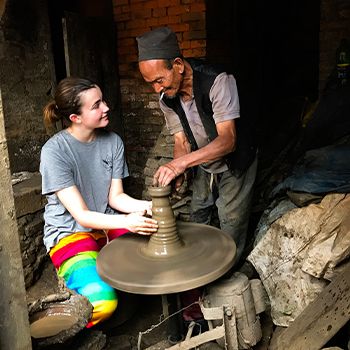
Cultural Immersion in the Middle East
The Middle East is a region known for its rich and diverse cultures that span across centuries. From ancient civilizations to modern metropolises, this part of the world offers a unique experience for anyone seeking to immerse themselves in a different way of life. In this article, we will explore the various aspects of cultural immersion in the Middle East and how it can be a life-changing experience.
Understanding the Middle Eastern Culture
Before embarking on a journey of cultural immersion in the Middle East, it is essential to understand and appreciate the nuances of the local culture. The Middle East is primarily influenced by Islam, and it shapes the region’s customs, traditions, and way of life. It is crucial to respect and adhere to the cultural norms and values while visiting any country in the Middle East.
Religion and Spirituality
Islam is the dominant religion in the Middle East and plays a significant role in the lives of the people. Mosques are sacred places of worship, and it is essential to dress modestly and remove shoes before entering. Understanding the basic tenets of Islam can help visitors navigate the religious landscape respectfully.
Cuisine and Hospitality
The Middle Eastern cuisine is renowned for its flavors, aromas, and diverse range of dishes. From aromatic spices to succulent kebabs, the region offers a gastronomic adventure like no other. Trying local delicacies and experiencing traditional Middle Eastern hospitality, known as “Arabian hospitality,” is a must for any cultural immersion experience.
Visiting Cultural Landmarks
The Middle East is home to numerous cultural landmarks that offer insights into the region’s rich history and heritage. Exploring these landmarks is a surefire way to immerse yourself in the Middle Eastern culture.
Pyramids of Egypt
Located on the outskirts of Cairo, the Pyramids of Egypt are ancient architectural wonders that continue to amaze visitors. Standing tall for over 4,500 years, these monumental structures offer a glimpse into the fascinating civilization of ancient Egypt.
Jerusalem’s Old City
Jerusalem’s Old City is a UNESCO World Heritage Site and a melting pot of cultures and religions. With its vibrant markets, sacred sites such as the Western Wall, and the Church of the Holy Sepulchre, this city is a must-visit for anyone interested in experiencing the convergence of different religious and cultural traditions.
Learning the Arabic Language
Language is a vital aspect of cultural immersion, and in the Middle East, Arabic is the predominant language. Learning basic Arabic phrases can enhance your cultural experience and help you connect with locals on a deeper level.
Arabic Calligraphy
Arabic calligraphy is an art form in itself, with its intricate designs and flowing script. Attending calligraphy workshops or visiting calligraphy museums can deepen your understanding and appreciation of this beautiful aspect of Middle Eastern culture.
Respecting Cultural Etiquette
Respecting cultural etiquette is essential when immersing yourself in the Middle Eastern culture. Some key points to keep in mind include:
Dress Code
In many Middle Eastern countries, modest clothing is expected, especially when visiting religious sites or interacting with locals. Understanding and adhering to appropriate dress codes help show respect for the culture and its traditions.
Greetings and Gestures
Learning how to greet locals and understanding their non-verbal communication can go a long way in building connections. Simple gestures such as using your right hand for handshakes or accepting drinks with your right hand portray cultural sensitivity.
Conclusion
Immersing yourself in the Middle Eastern culture can be a transformative experience. From understanding the region’s religious and spiritual aspects to exploring its iconic landmarks and learning the Arabic language, there are countless opportunities for cultural immersion in the Middle East. By respecting local customs and traditions, visitors can gain a deeper appreciation for this vibrant and diverse part of the world.


